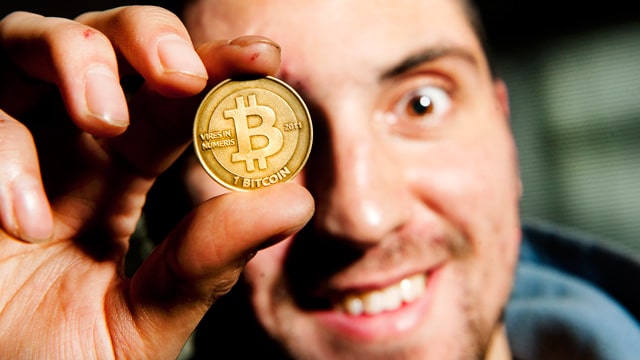The Fiat system is broken…
The harsh reality is that Fiat (state issued) currencies are losing value faster than the Lost Prophets back catalogue. Western governments are issuing currency at blistering rates and the common man’s money is failing in its core duty as a store of value.
Without diving too deep into the fractional reserve banking system on a hangover, here’s a snip of one of Bitcoins bigger but more subtle qualities. State money is generally injected directly into the banking system, your friendly bank then multiplies the imaginary dosh and farms out mortgage and credit agreements to the people. In this way the working future of the population is locked in for years to come in a format that can be neatly packaged and sold to other countries across complex derivatives markets. This is how bankers sell your future to make profit today and this is one of major the problems Bitcoin enables society to solve. (This is also how bankers gave birth to the Global Financial Crisis in 2008 when US were busted flogging sub-prime mortgage derivatives that were based on loans that would never be repaid.)
Bitcoin, by design, is immune to this kind of inflationary bullshit because the total number of Bitcoins in circulation sits firmly outside of Government control (approximately 21 million – ever.) A much needed upgrade to the money system has emerged and crypto-economies are banker proof, tamper proof and provide complete global stability of value.
But what if we run out of Bitcoins?
Bitcoin is hard coded to go big. Each Bitcoin is divisible to eight decimal places. The value of “1 BTC” represents 100,000,000 monetary units — one hundred million. A total of 21 million Bitcoins means, at its lowest denomination there are over 2 quadrillion transferable units in the Bitcoin ecosystem — enough for every living human to hold over 300,000 units.
As the value of a single Bitcoin grows too large to be useful for day to day transactions, the market has already begun dealing in smaller units such as milli-Bitcoins or micro-Bitcoins. A Bitcoin is very large and the vast majority of transactions these days are within the milli-bitcoin scale – indeed the majority of Bitcoin wallets hold no more than a few milli-bitcoins – currently worth around $1 each.
Real Value!
Perhaps Bitcoin’s greatest asset lives in the real economic value it brings to users. Last week a $150m transaction took place using Bitcoin at a cost of under $1 – that single payment represented a cost saving upwards of $100,000 in processing fees alone. Examples like this are presenting themselves daily as vast swathes of European, Asian and African an US merchants now accept Bitcoin to eliminate the payment processing costs, administration and currency exchange fees that hamper international trade.
Put simply those businesses accepting Bitcoin are becoming rich, they are more competitive and reach greater markets than those who don’t. Add to this that Bitcoin is appreciating at up to 10% per day and it is clear to see the currency is adding huge value to company bottom lines. This wasn’t lost on Richard Branson who last week opened the doors of the Virgin Galactic space tourism programme to those able to pay with Bitcoin.
…and for those businesses wishing to avoid volatility, peripheral technologies such as BitPay and Gyft have already emerged to enable businesses to accept Bitcoin on the basis of instant Fiat currency conversion at point of sale.
All or Nothing
It goes without saying that Bitcoin has a binary future – it represents a paradigm shift in global money or it represents a digital Tulip party. Right now it’s looking like the former. Go buy a Bitcoin. You might end up with nothing, but you might just bag a major slice of all future global money.
☛ Best New Tumblr Find: Rich Kids Of Instagram
















